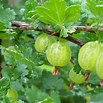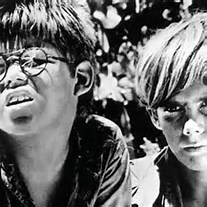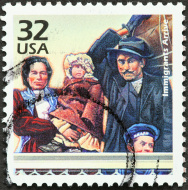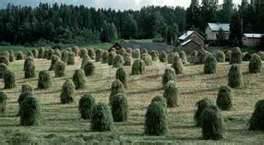
Fruits of the Earth
Nadine Gordimer died today, the great South African writer, though I had actually sat down to write about another great writer who passed away back in April, Alistair Macleod, a Canadian. When speaking of Macleod, it is perhaps more precise to say a Canadian of Scottish heritage because when you read Macleod, though the stories are set in Canada, on Cape Breton Island for the most part, one often feels as though one is reading about Scotland. Macleod’s family were Gaelic speakers and though he was born out in the Canadian West where the family had gone to earn a better living, homesickness eventually brought them back to struggling Nova Scotia when Macleod was ten. From that age, he grew up amongst the descendants of the Scottish clearances of the 1700’s, listening to their songs and stories and superstitions. Though he later left the island to study in the American Midwest and ultimately to live in Ontario, his heart undisputedly remained in the Maritimes, in the hill farms and fishing villages and mining towns of Cape Breton, amongst the Gaelic speakers of his youth.
Several of Macleod’s stories are set on small, family farms in the Cape Breton hills. He of about the animals they loved and sold and killed there, about the often back-breaking, boring work they had to do, about the closeness of large families pitted against the particular demands of the changing seasons working together to survive.
Summer, in particular, was difficult. It was a race against time and the capricious Nova Scotia storms to get the hay in before it rotted in the fields. Families grew thin and sun-burnt and crabby, down on sleep, working to or beyond their capacities.
I remember something of this from my time on a small Finnish dairy farm when I was a teenager. I remember bringing the hay by pitchfork. I remember getting up at the crack of dawn to make food to fuel the haymakers and going to bed late after having cleaned up from their last meal.
I remember one evening in particular when we had worked in the blazing fields all day and after eating and going to the sauna were all reclining on the front porch relaxing with a drink. Suddenly, over in the west there was a crack of thunder, and then another. The sky, the lavender, never-dark sky of the Nordic summer, had gone an evil purple shot through with infernal streaks of orange and yellow as the sun sank to the horizon. We jumped to our feet, threw on the scratchy, sweat-stained work clothes we had just discarded in heaps in our rooms, and ran for the back field. This particular field had been baled and I remember working frantically alongside a stout 65-year-old grandmother. I had to work beside her because it was only with her help that I could lift the heavy bales of hay.
Those days are thirty years behind me now, but in my own small way I still experience something of those stern imperatives of time and weather every summer. The experience is self-imposed. I grow berries and when the berries are ripe, you mustn’t dawdle. You have to lay everything else aside and get to work.
Now, for those of you who might think it’s romantic to grow berries, to sell them, and make jams and jellies from them, I’d have you think again. For there is a lot of boring and monotonous work that goes into it: netting, picking, cleaning, sorting, boxing, bagging, freezing, jam and jelly making. Not to speak of delivering. Which isn’t to say that I don’t like growing berries. There are things about it that I like very much.
The thing I like most about it is when it’s done, when large bowls of cleaned and gleaming fruit are sitting on my kitchen counters: emerald gooseberries, crimson red currants, snowy white currants, and the dark purple, strong-smelling blackcurrants. I also love it when rows of glowing jam and jelly jars are potted and sealed and sitting on my pantry shelves. Picking can be pleasant, in the cool of the early evening as the shadows lengthen across the lawn. It can be pleasant if you are only picking a bowlful of berries for a recipe or a snack. But I am not usually doing this. I (with my husband often by my side) am usually bent over with my head in a bush determined to get in all the gooseberries, or red currants, or black currants that evening. So I can get them to market the next day, so I can make jam or jelly before they go bad.
Let’s talk a little more about picking. Nothing romantic about bulk picking. Ask any migrant worker. The gooseberries are the worst since their slender branches have long, vicious thorns that pierce and rip the skin. The days immediately after gooseberry-picking, my hands and arms (and sometimes my legs and backside) look like I lost a fight with a gang of very rabid tomcats.
Then there are the spiders. They don’t appear immediately. They wait for me to put the bird-netting on about two weeks before the berries are ripe. Then they creep in, pregnant mother spiders, with their egg sacks on their backs, looking for a likely cluster of high leaves to spin a nest for their babies to hatch in. They like to be high because the sun warms their offspring and the bird-netting lets them do this without getting picked off for a snack. After the mother spider gets her little ones all settled in their sun-warmed silk and protective leaves, she hangs around, literally, on the nearby leaves, to keep an eye out for predators, or gooseberry-pickers.
I, who am not a big fan of spiders, know to look for them now, and to gently try and pick around them. Babies are babies, even if they’re spider babies, and I’m not going to be responsible for a massacre of innocents, but it unnerves me nevertheless. I also don’t always manage to spot the spider nests (their camouflage is quite good) and have occasionally brought my hand out of the bushes full of gooseberries or black currants with a large, fuzzy, pissed-off looking mother spider riding on my wrist. Think about that next time I give you a jar of jam.
Then there is the netting itself, netting designed to keep out birds, but which traps dragonflies (I am forever mounting rescue operations), snapping turtles and sometimes even me. Getting the nets on the bushes is tedious and usually involves snagging the netting on rose bushes, wooden terrace walls and the clips on Wellington boots. Getting the nets off the bushes is the same infuriating snag-fest in reverse.
So why do I do it? Why do I torture myself with worrying about fruit and insects, inflicting back aches and scarring on my body? For one thing the bushes are already there and full of fruit each year and to ignore this seems like a sin. For another, maybe it’s a good thing to not be romantic about what it means to bring food to table. Maybe it’s good to know how much work it really takes. Finally, maybe it’s worthwhile to subject yourself to the whims of nature, even if you don’t have to, to remind yourself you’re human and whether you now lead a desk-bound life or not, are part of the uneasy alliance we humans have with the earth upon which we live. Like those Finnish farmers I stayed with so long ago, and the Scottish farmers of Macleod’s Cape Breton, who loved the land they lived on, but feared it, too, and out of this fear grew their respect.




